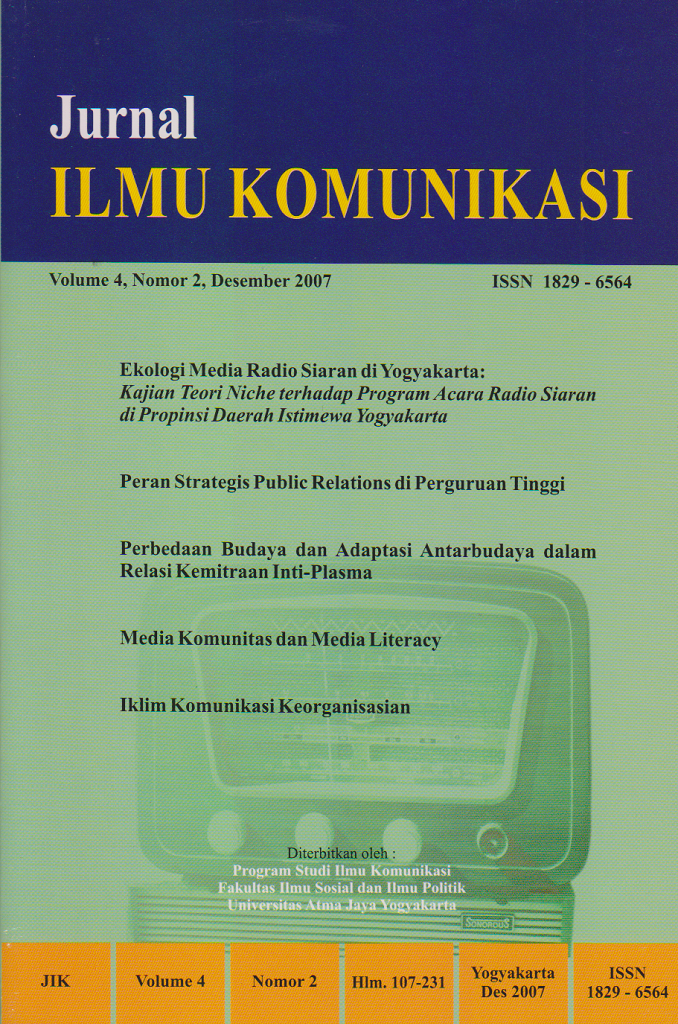Perbedaan Budaya dan Adaptasi Antarbudaya dalam Relasi Kemitraan Inti-Plasma
DOI:
https://doi.org/10.24002/jik.v4i2.224Abstract
Abstract: The difference of culture is a primary characteristic of the intercultural communication. Cultural difference implies to the different communication behavior. These differences raise various communication problems in which its solution needs certain communication competence. Cultural difference in estate system in Indonesia was started by dualistic economy reality and it turns to the raise of the cultural dualism. In one side big estate is oriented to modern capitalism (nucleus estate), and another side small holders (plasma farmer) is oriented to the traditional pre-capitalism. They develop intercultural communication competence by establishing strategy of convergent and divergent adaptation. The difference between nucleus estate and plasma farmer is based on the differences of existence in the orientation of farming and structural tightness. The communities of nucleus estate have culture that take root in economic interests (commercial). Meanwhile some of farmer communities are oriented to family and the communities’ interest. Standardization of existence and control towards job is a part of structural tightness characteristic and nucleus estate’s masculinity. However there are a few modern farmers that begin to concern to the business. This study also shows the adaptation strategy in the communication behavior is applied by nucleus estate people. Adaptation strategy is divided into two strategies: (1) convergent strategy manifested by the adjustment in other party’s communication behavior, meanwhile the divergent strategy manifested by the show of the different behavior appearance as their culture identity.
Downloads
Published
How to Cite
Issue
Section
License
Jurnal ILMU KOMUNIKASI is an academic journal. As such, it is dedicated to the open exchange of information. For this reason, JIK is freely available to individuals and institutions. Authors who publish in Jurnal ILMU KOMUNIKASI will release their articles under the Creative Commons Attribution (BY) License. This license allows anyone to copy and redistribute the article in any medium or format as well as remix, transform, and build upon the material for any purpose, even commercially as long as they credit the authors for the original creation. For details of the rights authors grants users of their work, see the "human-readable summary" of the license, with a link to the full license. (Note that "you" refers to a user, not an author, in the summary)
 This work is licensed under a Creative Commons Attribution 4.0 International License.
This work is licensed under a Creative Commons Attribution 4.0 International License.














